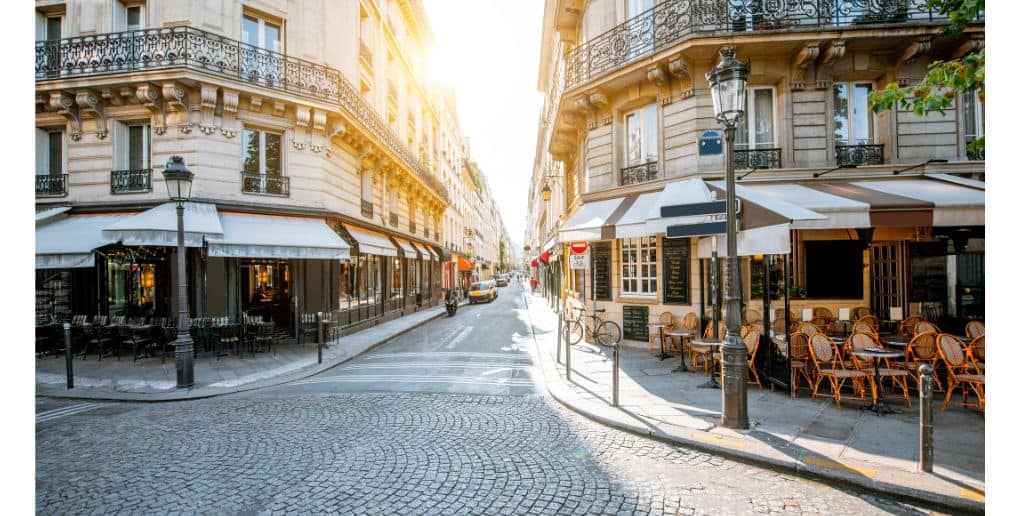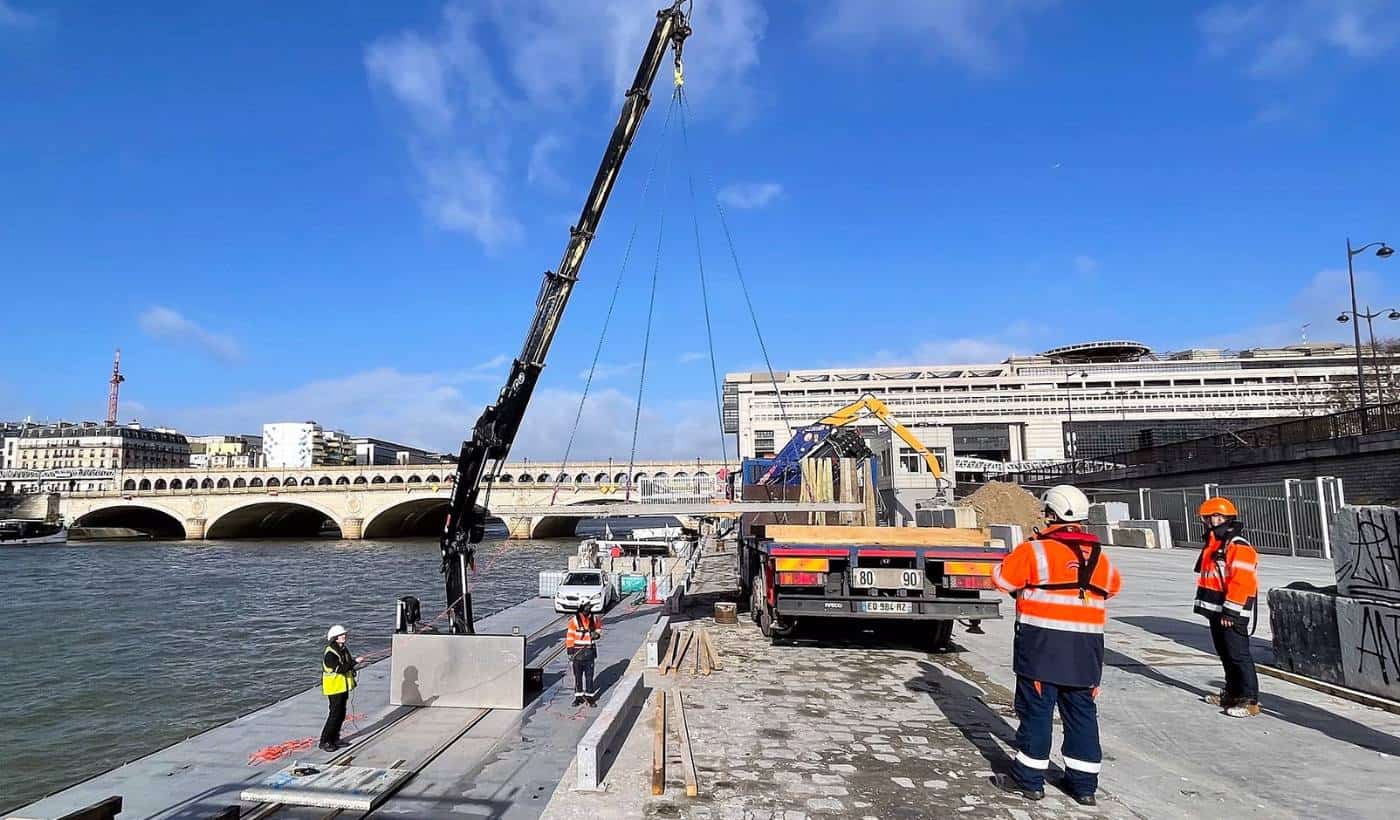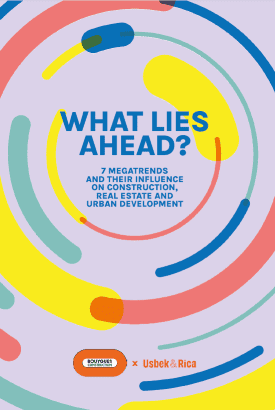
“Living with… for the last year”
6 minutes of reading
La Vie avec (Living with…) is a user-adjustable system for monitoring the adaptation of French habits and lifestyles, combining monthly quantitative surveys of a panel of 1,000 people and the management of an online community of 50 citizen-consumers. The quantitative data presented in this article is taken from an online survey conducted by ObSoCo (Observatoire Société & Consommation) on the Respondi panel from 19 to 26 January 2021 on behalf of Bouygues Construction in three survey areas: the ideal living environment, housing as a work environment and involvement in local and community initiatives.

French attitudes to the epidemic
Overall, the level of concern about coronavirus is much lower than it was at the beginning of the pandemic and has stabilised since November 2020. Nevertheless, approximately one in two French people are still worried about their health and almost two thirds are worried about their family. While the news tends to focus on the variants, 31% of respondents do not feel able to protect themselves against the virus, which is nine points more than at the end of last year. In this context, the French are increasingly critical of the authorities’ management of the epidemic: the level of discontent has increased considerably since the first lockdown, despite a minor, brief lull in the weeks leading up to the end-of-year festive period. Currently, 79% of respondents are critical of the government’s handling of the health crisis, with 35% rating it as “very poor”. 27% rate it as good, but only 3% as “very good”. 53%: the disillusions of “post-COVID world”? Fatigued by the epidemic and facing a future regarded as unpromising…53% of French people now hope for a rapid return to the situation as it was before the health crisis. That’s 21 points more than last summer! A third focuses on purchasing power (+3 points), a third on reversing globalisation (-5 points) and just over a quarter would like to see the ecological transition accelerated (-6 points).The ideal living environment
The desire to live elsewhere is growing in big cities If they had the opportunity, half of the French would choose to move. This proportion has fallen slightly (-6 points since July 2020) but remains significant. It is particularly prevalent among residents of large cities (especially Paris), 38% of whom state that they would “very much” like to move, 16 points more than before the health crisis began! Note: 29% of respondents do not want to move at all. This is eight points higher than in July 2017. While the appeal of a mid-sized town or city that is nonetheless close to the amenities of a big city remains predominant (27%), there has been a five-point increase in the proportion of French people who would choose isolated housing in the countryside compared to 2017, which now stands at 20%. Similarly, a small town or village far from the major urban centres also gained five points over the same period. This trend seems to be closely linked to the pandemic. It remains to be seen whether it will be maintained and lead to actual moves, as the French also emphasise their need for local amenities. The attraction of nature, as ever, but also the need for space The epidemic and the measures taken to contain it have acted as a catalyst for the French in prioritising their living space. The same motivations are found in the top three, but these motivations have become stronger: the desire for a pleasant climate (41%, +4 points), contact with nature (40%, +2 points) and closeness to friends and family (38%, +2 points). The biggest change concerns the desire to have a lot of space, with an increase of six points compared to the pre-crisis period. In contrast, proximity to one’s workplace is becoming less and less important in the ideal living environment, probably as a result of the increasingly widespread use of teleworking. It should be noted that the priorities in terms of ideal living environment differ according to age, with young people favouring – more so than their elders – the proximity of their friends and family, and to their place of work or having space.Housing as a work environment
Housing comfort as a priority The health crisis has forced the French to spend much more time in their homes and may have generated a desire to improve and change them. When asked what they would change as a priority, the first thing they said was to improve the energy performance of their home and its thermal comfort. While this concern ties in with a growing awareness of the environmental impact of energy consumption, it is also related to the desire to save money. Soundproofing is the second most important thing that the French would like to change in their homes. While this concern did not arise with the health crisis, it was undoubtedly heightened by the lockdown periods. Note: the experience of teleworking does not significantly alter the desire to make changes to housing. Unsurprisingly, teleworkers are slightly more concerned about their Internet connection (quality, speed and signal strength in the rooms) than the French as a whole. More than one in two teleworkers did not have a dedicated workspace in their home More than a third of French households has had at least one member teleworking since the beginning of the health crisis. The use of teleworking differs significantly according to social and professional status: financially well-off individuals, graduates and higher-category professionals are those who make the most use of teleworking. Nevertheless, before the crisis, more than one in two teleworkers did not have a space to work remotely in their home. With the crisis, 30% of them were able to set up a space (a dedicated room or permanent space within another room) to be able to telework. However, in January 2021, there was still 30% of teleworking households for which no specific space was dedicated to teleworking in the home. Despite this, interest in shared workspaces is still quite low: 32% of teleworkers say they would use them if they were available near their home, but only 5% of them are certain of this.Local and community initiatives
Declining community involvement… The beginning of the pandemic was marked by a surge of solidarity that led to a multitude of small initiatives. With the crisis having lasted now for almost a year, weariness has set in. As the initial astonishment has subsided, these gestures of support and mutual aid are on the decline. For example, motivation among the French to get involved in socially-beneficial causes and projects has fallen significantly since mid-2020 (30% of the French, i.e. nine points less than in the spring). Similarly, solidarity initiatives measured in the spring (shopping for other people, taking part in solidarity initiatives in one’s local neighbourhood) have seen a drop in the proportion of French people who say they are involved. This decline in reaching out towards others is also seen in neighbourhood relations: although a significant proportion (30% of respondents) say they have strengthened ties with their neighbours since the start of the crisis, this is six points lower than in May 2020. Moreover, only 6% of French people say they participate in a neighbourhood social network to exchange services or help between neighbours. However, 42% tell us that they would do so. Similarly, 59% say they would like to get involved in a project (volunteering, involvement in an association) or a cause, while 17% already do so. …which calls for constraints on involvement to be lifted and the provision of more information on existing schemes So how can we encourage involvement in these community initiatives? The main drivers of commitment are attachment to the cause and enjoyment of being involved. In short, when it is based on intrinsic motivations and is not seen as a constraint. The main difficulties raised by those who would like to be more involved are time constraints (43%) and adapting to their schedule (19%), ahead of desire (27%). Another important factor is the lack of information or support (knowing who to contact, being informed about voluntary organisations, being guided in their choice of voluntary work), which was mentioned by 25% of the respondents as an hindrance to their involvement. Although motivation varies little according to the type of involvement, pride in contributing to a cause is more often emphasised by people who participate in solidarity initiatives in their local neighbourhood or those who have made masks, gowns or scrubs for others. *ObSoCo: Observatoire Société & Consommation (Social & Consumer Behaviour Observatory) The quantitative data presented in this report is based on an online survey conducted by ObSoCo for Bouygues Construction on the Respondi panel from 19 to 26 January 2021. The study was conducted based on a sample of 1,000 people, representative of the population of mainland France aged 18 to 75. The representative nature of the sample was constructed by setting up quotas on the following criteria: age, gender, socio-professional category, region and size of the urban area of residence and highest qualification level. The data was adjusted in line with all the quota variables in order to compensate for any residual differences between the structure of the sample and that of the population as a whole.Most read
More reading
Read also

Article
20 minutes of reading

Energy
in partnership with


‘Paris at 50°C’: a fact-finding mission to prepare Paris for future heatwaves
Article
2 minutes of reading

What if your sites were supplied via rivers instead of roads?
Article
3 minutes of reading



